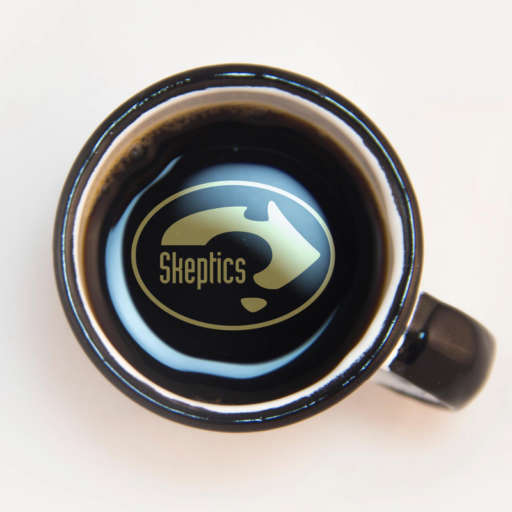In response to a recent ABC “science news” report about acupuncture, Dr Steve Basser writes:
When a skeptic reads that acupuncture ‘works’ the most important question to ask is what specifically the author means by acupuncture? What exactly is it they are claiming is working, and how have they reached their conclusion?
There have been innumerable papers on acupuncture published over many many years in journals both reputable and less so, but a weakness of many of these is that they do not clearly define what it is they are testing, and fail to detail how they will establish whether it does indeed ‘work’.
Traditional Chinese acupuncture is based upon theories of
energy (chi) flowing through channels referred to as meridians. Access to these meridians, and thus the means of effecting the energy flow, is through designated points on the skin that are directly related to specific body areas.
Traditional Chinese acupuncture is therefore based upon specificity. That is, individual conditions require needles to be inserted into designated points, and inserting needles into non-specific points, according to the theory, will either provide no benefit, or even cause the condition to worsen.
Nontraditional acupuncture involves stimulation at random points with no connection to the historical theory of energy, meridians, and specific acupuncture points. The stimulation is usually needling, but some people use ‘laser’ acupuncture, which in many instances is basically red torch light rather than true laser light.
Traditional Chinese acupuncture cannot be validated by only comparing it to a non treatment group. Many studies have fallen prey to this error. Specific needling has to be compared with non-specific needling, which in turn must be compared to some form of non acupuncture based method.
The reason for this is what is referred to as ‘counter-stimulation’, which is a well described phenomenon in which sensory stimulation reduces our perception of pain. In essence it means that stimulation in one body area can reduce the sensation coming from another. If I knock my thumb with a hammer it hurts. If I then drop the hammer on my toe the thumb doesn’t seem so sore.
There is evidence that some people are more sensitive to this phenomenon, and stimulation of the skin with needles, or low level electrical stimulation, or irritant compounds such as capsaicin (derived from peppers) can cause the release of natural pain relievers, such as the endorphins.
Traditional Chinese acupuncture, therefore, can only be scientifically validated by directly comparing it to non-specific needling, to a non needling form of counter-stimulation, and to a no treatment group.
Acupuncture research has rarely been this comprehensive, but there have been many quite sound studies, and when we look at the totality of acupuncture research, and don’t cherry pick to suit preconceived ideas, certain conclusions can be reached.
Basically, traditional Chinese acupuncture has not been shown to be more effective than non-specific needling, which in turn has not been shown to be more effective than non needling forms of counter-stimulation such as transcutaneous electrical nerve stimulation (TENS).
There is evidence for a slight but somewhat inconsistent benefit from the different forms of counter-stimulation, but none of these have demonstrated a specific measurable effect that supports the many claims about their individual qualities, and in my view we should stop referring to them in specific terms.
Evidence for counter-stimulation is evidence for counter-stimulation; it is not evidence for acupuncture.
The article on the ‘ABC Science’ website – More evidence on how acupuncture works – is a perfect example of this, and of the weakness of a lot of so called research into acupuncture, and the faulty conclusions that result.
The mice received acupuncture into a ‘well known acupuncture location’, and when levels of adenosine went up the conclusion reached was ‘adenosine mediates the effects of acupuncture’. The only comparison group was mice who had needles in the same ‘well known location’, but they were not rotated.
How can any conclusion be reached when there was no measurement made of adenosine in mice who had needles inserted randomly, or mice who had their skin stimulated by another method?
Adenosine may well be a mediator of the counter-stimulant effect, and that could have been an interesting outcome of an alternative study. Unfortunately the study as reported is unable to say anything meaningful as the researchers appear to have started out with a preexisting belief in acupuncture’s validity and this has prevented them from approaching the study with scientific objectivity.
This study could be seen to lend more support to the counter-stimulation theory, but that is all that can be said.
Those who claim acupuncture is more than just one of many ways of inducing a non-specific counter-stimulant effect must provide evidence to support this assertion. They must make it clear what specific form of acupuncture they are saying provides this unique benefit, and explain why they believe their chosen method is more effective than the alternatives.
Most importantly their research must be designed and conducted in such a way that it properly tests their claim, and is not merely a means to try and bolster a preexisting belief.
Hopefully the research Dr Marc Cohen is doing will fulfill this promise. We can only wait and see.
Steve Basser is a general practice, medical doctor who lives in Melbourne and supports science based medicine.

Skeptics Café
Victorian skeptics social & virtual events
Very interesting article. I like how you have described the two different types of acupuncture. Yes, it can have a placebo affect on someone but it still works.